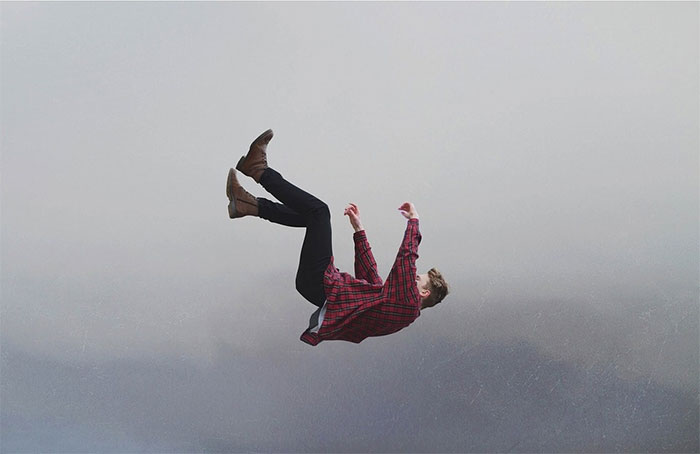What would you think if you slipped and fell from a scaffolding as high as a ten-story building, or fell freely without the ability to deploy a parachute? This is a rare situation where survival is possible. However, if you remain calm and alert, there are several ways to influence your falling speed and reduce the impact force upon landing.
How to Survive a Fall from Height
Grab Something on the Way Down
If you can grab onto a large object like a plank or a beam, your chances of survival will increase significantly. This object will absorb some of the impact force when you hit the ground, reducing the pressure on your bones.
Try to Break the Fall into Segments
If you are falling from a building or a cliff in the wilderness, do your best to break the fall into segments by aiming for ledges, cliffs below, trees, or other objects. Dividing a high fall into shorter segments will reduce the inertia of the fall and increase your chances of survival.
Relax Your Body
If you keep your knees and elbows stiff, and tense your body, the fall will cause more damage to your vital organs. Don’t stiffen up. Try to relax so that when you hit the ground, your body can absorb the impact better.

Do not stiffen your body when falling from a height.
One way to maintain relative calm is to focus on taking steps to increase your survival rate.
Pay attention to your body, moving your arms and legs to ensure they are not stiff.
Bend Your Knees
To survive a fall, perhaps nothing is more important (or simpler) than bending your knees. Studies show that bending your knees upon landing can reduce impact force by 36 times. However, don’t bend your knees too much—just enough to keep your legs from stiffening.
Land on Your Feet
No matter how high you fall from, you should always try to land on your feet. Landing on your feet will concentrate the impact force on a smaller area, allowing your legs and feet to absorb the most significant impact. If you fall in any other position, try to adjust your body before hitting the ground.
Fortunately, adjusting your body to land on your feet seems to be an instinctive reflex.
Keep your feet close together so both feet hit the ground at the same time.
Land on the Balls of Your Feet
Point your toes slightly downward before impact so that you land on the balls of your feet. This position will help the lower part of your body absorb the impact more effectively.
Try to Fall to the Side
After your feet hit the ground, you will likely roll to one side, either forward or backward. Try to avoid falling flat on your back. Statistically, falling to the side is the best option. If you cannot fall to the side, try to roll forward, using your arms to cushion the fall.
Protect Your Head When Bouncing
When falling from a great height, your body often bounces upon landing. Some people who survive the initial impact (usually landing on their feet) suffer severe injuries from the second impact. It is almost certain that you will be unconscious after bouncing. Use your hands to protect your head by placing both arms on either side of your head, with your elbows pointing forward (and extending in front of your face), fingers interlaced behind your head or neck. This hand position shields most of your head.
Seek Immediate Medical Assistance
Due to the adrenaline surge while falling, you may not feel pain upon landing. Even if there are no visible injuries, you may have broken bones or internal injuries that need immediate treatment. Regardless of how you feel, get to a hospital as soon as possible.

Use your hands to protect your head by placing both arms on either side of your head, elbows pointing forward.
Tips
If you are falling uncontrollably, try to shift into an arched position to regain stability. If nothing else occurs, this stability will help you regain some calm.
If you fall into an area with quicksand or viscous substances like clay, you may get stuck there. Don’t panic! Move your legs as if you are climbing stairs while using your hands to push yourself up. You will have enough oxygen for at least a minute, which is plenty of time to surface.
Stay calm; if you are always panicking, you cannot think clearly!
If you are falling in an urban area, it may not be possible to adjust your trajectory accurately to land in a good spot, but it is better to aim for glass structures, awnings, and cars rather than landing on the street or concrete roofs.
Good health and youth seem to positively affect survival rates in high falls. You cannot change your age, but this is a reason to stay fit.
You can also take classes to help prepare for such situations.
Never land on your heels, as this position can cause both leg and spinal fractures. Always land on your toes to avoid life-threatening injuries.
Discard any items in your pockets if you have time so they do not impale you.
Avoid falling into trees, as they will not help break your fall. You are more likely to be impaled by branches.
You can suffer severe injuries when falling into water, depending on the depth and impact force.


















































